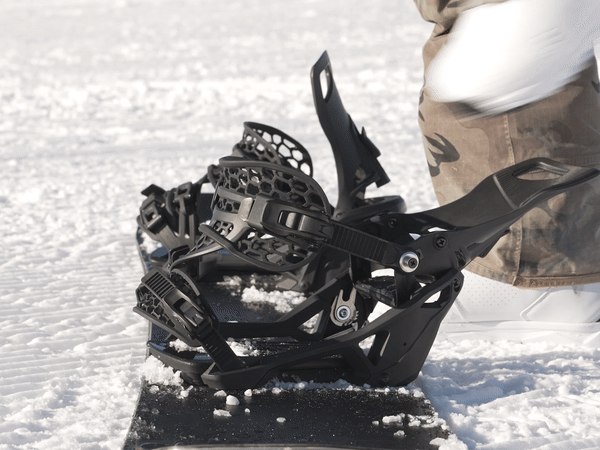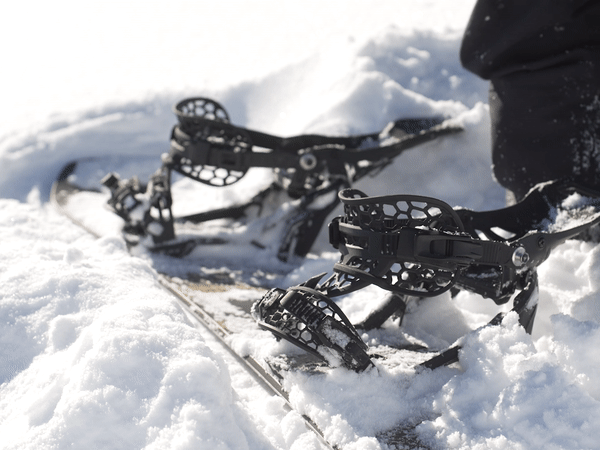What’s up with Nidecker’s new Supermatic binding system?
When it comes to bindings, most snowboarders are old-fashioned. Nothing beats some good ol' straps, right? Sure, Burton has succeeded with their StepOn system, but many shredders still swear on the classic toe and ankle strap. But how about a system that combines the best of both worlds? Nidecker introduced their Supermatic system this season, and after seeing the amazing feedback at this year's Shops 1st Try, we decided to talk to Daniel Schmäh, the engineer in charge of developing Nidecker's new binding system.
Daniel, you're the brain behind Nidecker's new Supermatic bindings. Tell us a bit more about yourself.
I've been passionate about sports and technology since I was a kid. I've always been testing, developing and optimising my gear to make it work or meet my needs better. After studying engineering and having a quick first experience in the automotive industry, I jumped on the first chance I could to move to work on technology development in the sports industry. I've been doing this for the last 15 years now.
How long did you work on Nidecker's Supermatic project?
It's now over five years since we started this project, and the team around it has grown step by step as it became apparent that we were onto something really special. It's been quite an intensive period, but man, I'm really enjoying it.
Why make a new snowboard binding in the first place?
First up, we're all riders here at Nidecker. We've all ridden two-strap bindings over the years, which we loved for their feeling, but we've all understood first-hand the frustration of losing time and energy to strapping and unstrapping the back foot every time, every lift. We also saw more and more people from our generation – 35+ years old – leaving snowboarding to go back to skiing for reasons of practicality and comfort.
So we were all convinced by the market potential if we could develop a binding that would combine the feeling and comfort of a two-strap binding with the practical advantages of a step-in. That's how we defined the essential specs at the start of this project.
How would you explain the Supermatic in your own words? And which riders do you think will be most stoked about it?
Supermatic is the binding made for riders who are fed up with the strap-in/strap-out process and would like to be as fast as their skier friends at the lift… but don't want to make concessions on comfort and ride-feel.
What's been the feedback on the Supermatic from the industry and riders?
Amazing! The vast majority of the people who test the binding don't want to give it back. We started off targeting the "average" level of snowboarder, but the reality is that our audience is much, much wider than we thought. The interest is coming from total beginners all the way up to pro riders.
You decided to make the Supermatic work with any snowboard boot. Why not work exclusively with Nidecker boots?
Step-ins with dedicated boots already existed in the past, but the fact that you need one special boot was one of the reasons that most of them failed and/or disappeared. We all have different foot shapes and boot brands that we are comfortable in - and others that don't work well for us. Furthermore, having the possibility to change your binding only – and not the fresh new boots you just bought a couple of months ago – was also an argument which we thought was important for our new customers.
But for any people who need to renew their boots, come and try our new Nidecker models as well! We have a full new line for about two years which are really worth it!
A lot of snowboarders are, let's say, pretty conservative when it comes to their bindings. Why do you think the Supermatic can win over riders that haven't tried step-in bindings before?
The Supermatic is not a step-in binding as we've all known so far. We don't have any of the main disadvantages – no straps, stiff boots – that put off a lot of riders. Supermatic is much closer to a traditional binding, keeping the ride-feel of a standard two-strap binding with the speed of a step-in. The binding is thus much more accessible to more conservative riders, which our tests and our rider feedback have already proved.
From a personal perspective, would you like to see more innovation in the world of snowboard gear? What are the most interesting fields, in your opinion?
Yes, for sure I would. I think it will help snowboarding stay alive and even grow again in the future. Snowboarding is quite a conservative world apart from design and shapes, but I'm convinced there is still room for tech developments. I would love to see more, and we are also pushing within the Nidecker Group. We're working on innovations around new binding technologies, new ways of making board and binding production more sustainable, and improving end-of-life solutions for our products.
What's the Supermatic's biggest advantage over a classic step-in binding?
I would sum it up as no compromise on ride-feel since you are still attached to your binding by soft straps. You can keep your preferred boot brand and model to save money and ensure comfort. And you always have the option of entering the binding the standard way to get in and out in any sketchy snow or slope conditions.
What's your long-term vision for the Supermatic?
We are only at the 1.0 version of this new product, and it's already rider-approved, but of course, we have plenty of ideas to improve in the future. The future of Supermatic will be a wider line, with tech improvements and even new sizes. Stay tuned!
If you want to test Nidecker’s new Supermatic binding, make sure to find a store in your area or check out one of the many testival events in the Alps. For more Nidecker stories, head on over to their Instagram or YouTube channel.





